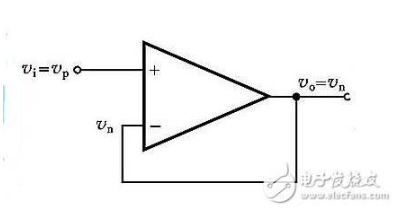Ideal op amps have "virtual short" and "dummy" characteristics that are useful for analyzing linear op amp circuits. In order to ensure linear operation, the op amp must operate with negative feedback in the closed loop state (if there is no negative feedback, the op amp under open loop amplification becomes a comparator). Therefore, to judge whether the device is good or bad, it is first necessary to clearly distinguish whether it is used as an amplifier or as a comparator in the circuit.

Regardless of the type of amplifier, there is a feedback resistor Rf, which can be checked from the circuit. Check the resistance between the output and the inverting input with a multimeter. If the large is outrageous, such as a few MΩ or more, then It is probably certain that the op amp is used as a comparator. If the resistance is small (0 Ω to tens of kΩ), then check to see if there is a resistor connected between the output and the inverting input. If any, it is definitely an amplifier. use.
According to the principle of the virtual short of the amplifier, if the op amp works linearly, the voltages at the same input and reverse input must be equal, even if there is a difference, it is mv. Of course, in some high input impedance circuits, the internal resistance of the multimeter will have a little influence on the voltage test, but generally it will not exceed 0.2V. If there is a difference of 0.5V or more, the amplifier will be bad!
If the op amp is used as a comparator, the voltages at the same input and reverse input are allowed to be different: when the same voltage > reverse voltage, the output voltage is close to the positive maximum; when the op amp is good or bad .
In many instruments and meters, there is an integrated op amp for small signal amplification, which is easier than other integrated blocks and components, so it can be said that it is a good way to repair instrumentation. Many of the integrated blocks in the more complicated instrumentation are directly soldered on the printed circuit board. The circuit board is inserted in the socket, and the distance between the boards is also small. It is difficult to directly measure the voltage. Here are some simple and practical methods for judging the integrated op amp block.
1. After energizing for a period of time, touch the temperature of the integrated op amp block. If the temperature is greater than 50 °C, it should be suspected of damage.
2. If possible, measure its DC current within a few milliamps. Otherwise it is damaged.
3. The integrated op amp has a single op amp and several op amps combined, should be familiar with its power supply and input and output feet. This also has a certain rule to find and find the relevant manual to know. The resistance between the input pins of the integrated op amp should be relatively large (generally greater than 10 M ohms). When the measured value is small, the diode with an infinite value at the input end should be observed, otherwise it will be damaged.
4. The online input voltage should be relatively small. Generally 0.1 V or less. Touch the input end by hand, the voltage should change at the output end, or touch the two ends of the feedback resistor (corresponding to a resistor in parallel), and the output will change accordingly. Of course, it is also possible to use parallel feedback resistors directly.
Laser radar contains LSPD safety laser scanner and LS laser radar. LSPD safety laser scanner is type 3 with CE certificate. It can be used for agv safety and industrial area protection. LS laser radar is for agv guide. Many famous agv manufacturers has installed LS laser radar to guide their agvs. Our cooperating brand contains Quicktron, Mushiny, Aresbots, etc. Feedback from customers are quite posotive.
Laser Radar,Auto Guided Vehicle Guide Radar,Sick Laser Radar,Safety Scanner,Safety Laser Scanner,Ls Series Laser Radar
Jining KeLi Photoelectronic Industrial Co.,Ltd , https://www.sdkelien.com